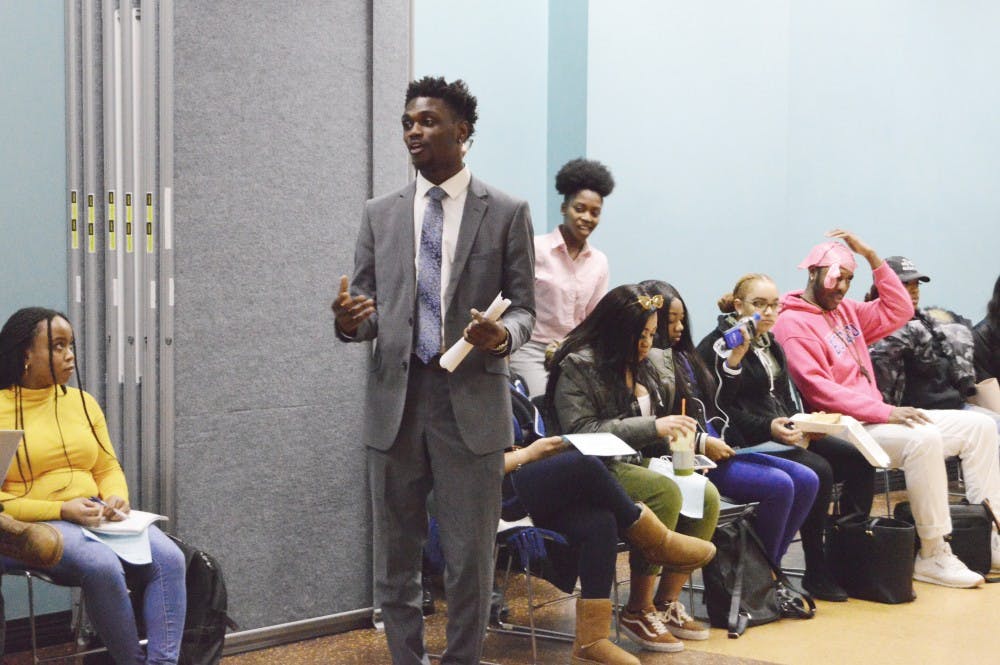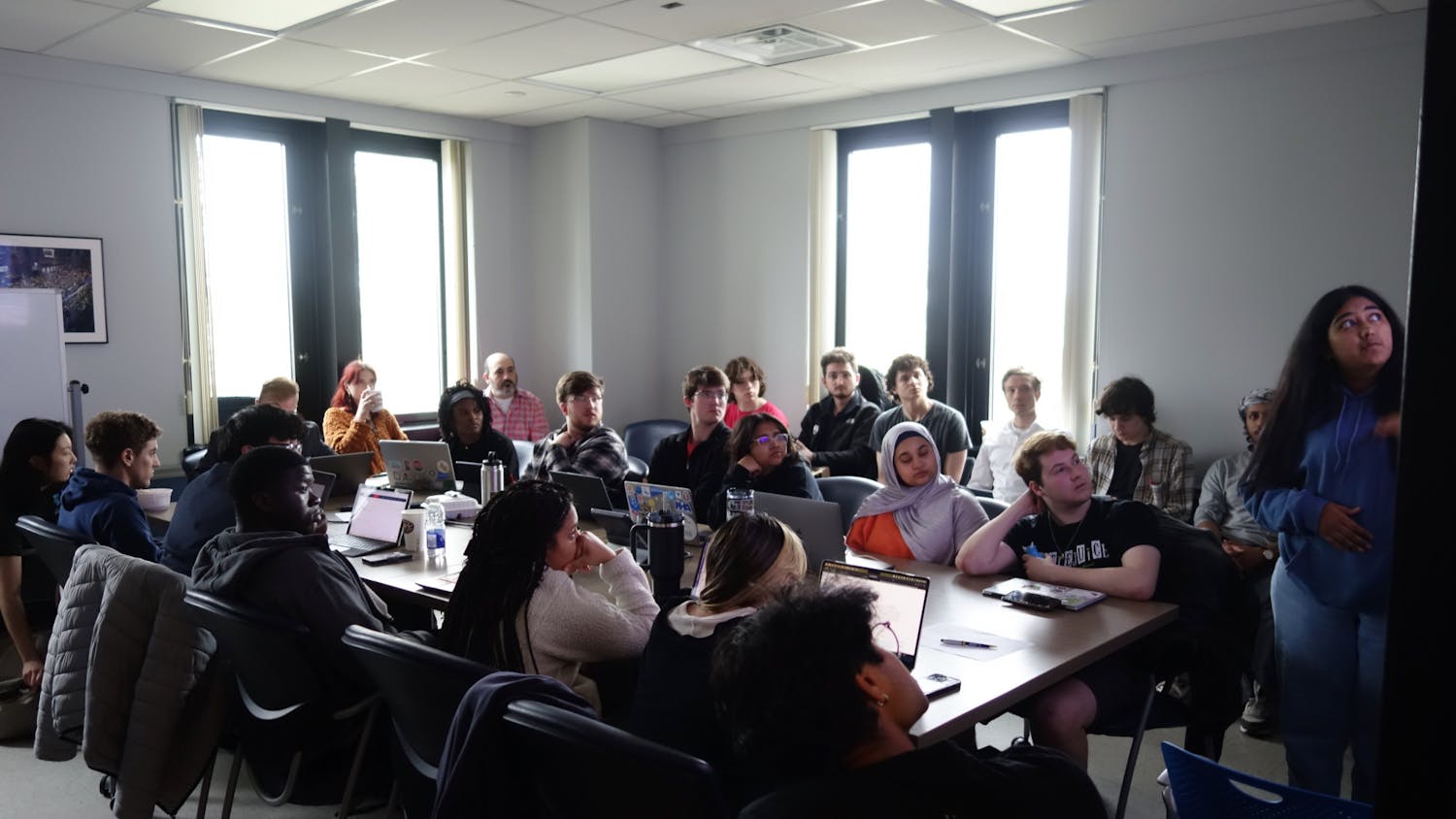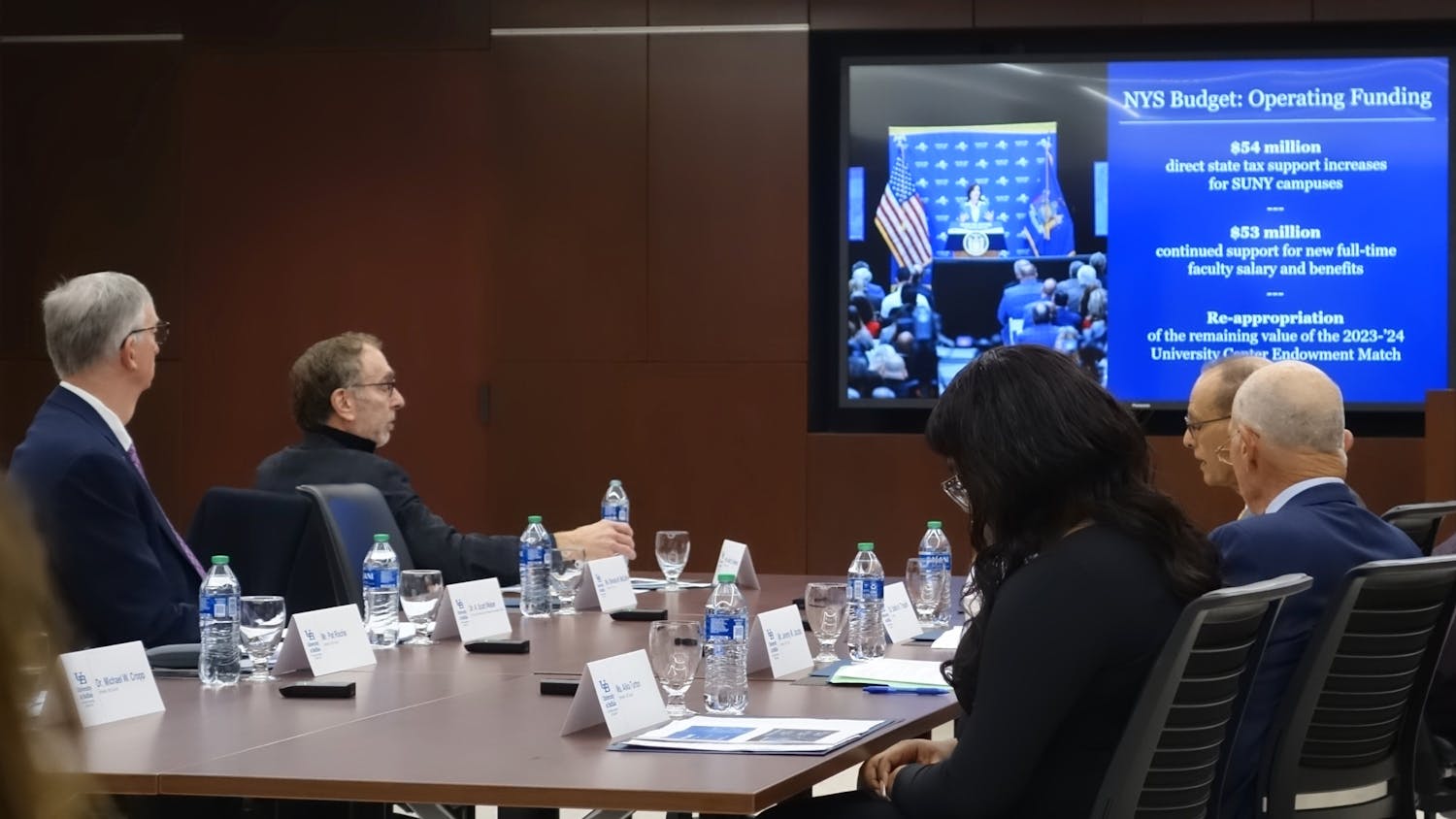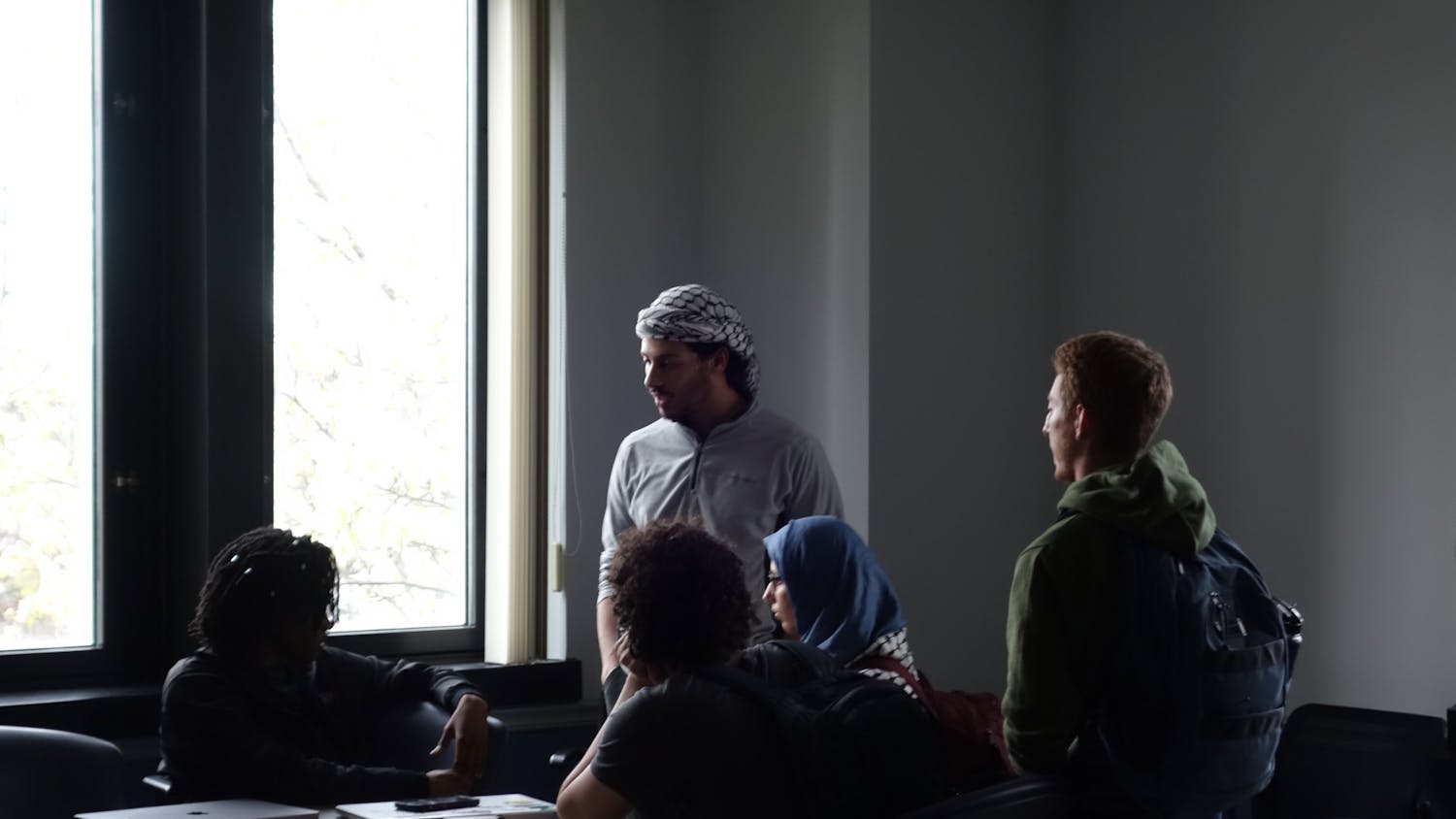Black Student Union members discussed systemic racism, representation in faculty and UB’s treatment of the African and African American Studies program at its general body meeting Wednesday.
BSU members and students talked throughout the meeting about the current state and future of the AAS program. Roughly 40 club members and students attended to voice concerns over the number of black faculty and AAS classes offered in the UB curriculum.
The meeting started with a vote on a number of topics. No one at the meeting voted that UB has “properly invested” or “cared” for its AAS program.
Fatima Nor, a senior psychology major and AAS minor, said she was concerned with the “very low” number of black enrollment at UB and the school’s “failure” to reach out to its minority population.
“They are not hiring black faculty or teachers. It’s getting to the point where it comes down to student activism,” Nor said. “We need to speak up for the things that are important to us, so [BSU] coming together is the first step toward that.”
The number of black tenure-track faculty has decreased from 61 in 2008 to 31 in 2018. In a UB communications article released last week, UB President Satish Tripathi admitted UB has “more to do” in terms of minority faculty recruitment and recognized the potential of programs such as SUNY’s PRODI-G initiative to add 1,000 minority faculty to state campuses in the next decade.
Nor said it’s important to get people in the president's office and that “higher ups” should hear their complaints in order to implement change.
The meeting comes after a rally on March 1 by the Pre-Law Chapter of the National Black Law Students Association. The organization listed eight demands for the university to improve black students’ experiences at UB.
BSU vice president Daniel Edwards, who oversaw the open discussion, said BSU “demands” UB restores the AAS program’s Clemens Hall floor. He called on UB to restructure the UB Pathways, as well, which he said doesn’t always list AAS classes.
Edwards said a new UB Pathways criteria would highlight and promote students in AAS courses.
“When it came to the inception of the African Americans Studies program, BSU played an integral part in it,” Edwards said. “It makes sense that we continue that connection between us and the [program] … Making sure it is intact, well funded and prosperous is something we definitely have to do.”
Only one of the roughly 40 students at the BSU meeting voted that they had an academic advisor who suggested an African American Studies course. A number of students said they were discouraged by their advisers to take AAS classes, with one student saying they were told the classes “had no meaning.”
“When I was [submitting applications] to UB, the [university was] speaking about diversity a lot, showing how diverse UB is,” said Velldreice Cadely, freshman chemical engineering major.
“I get here now and I am trying to take an AAS class and it’s not the same at all. The whole engineering department, I don’t feel they care about black students.”
Cadley said her adviser didn’t want her to take any AAS courses because “it had nothing to do with” her major. Cadley said being around people who look like her helps to make UB a more comfortable environment.
BSU opened the floor to suggestions on how to act on representational issues. Students discussed the need to hire black faculty in any program.
Deborah Pierce-Tate, a black faculty member in the Transnational Studies department, spoke at the meeting and said UB has its own definition of diversity that currently does not include hiring black faculty.
Pierce-Tate said "the advisers in the College of Arts and Sciences" told her not to advise students to take an AAS course. The room voted in unanimous favor on making an AAS course a requirement of all undergraduates. One audience member said if the UB Pathways were meant to make you “well-rounded,” they would include AAS courses.
Multiple attendees said a lack of black faculty does not encourage success for black students on campus. BSU reported that, by Fall 2020, there will only be two black faculty members.
“I think the amount of tenured black faculty on campus is about 1.6 percent,” Nor said. “The fact that Buffalo’s population is 40 percent black, it’s hard to say that it’s not institutionalized racism.”
BSU will hold a coffee talk on Friday in Clemens 1004 at 5 p.m. on social media in the black community.
Thomas Zafonte & Alexandra Moyen can be reached at:features@ubspectrum.com.
Correction: An original version of the article stated that English advisers told Pierce-Tate not to advise students.
Thomas Zafonte is a senior English major. He is a UB sports fan and enjoys traveling around Buffalo.


Alexandra Moyen is the senior features editor of The Spectrum.





